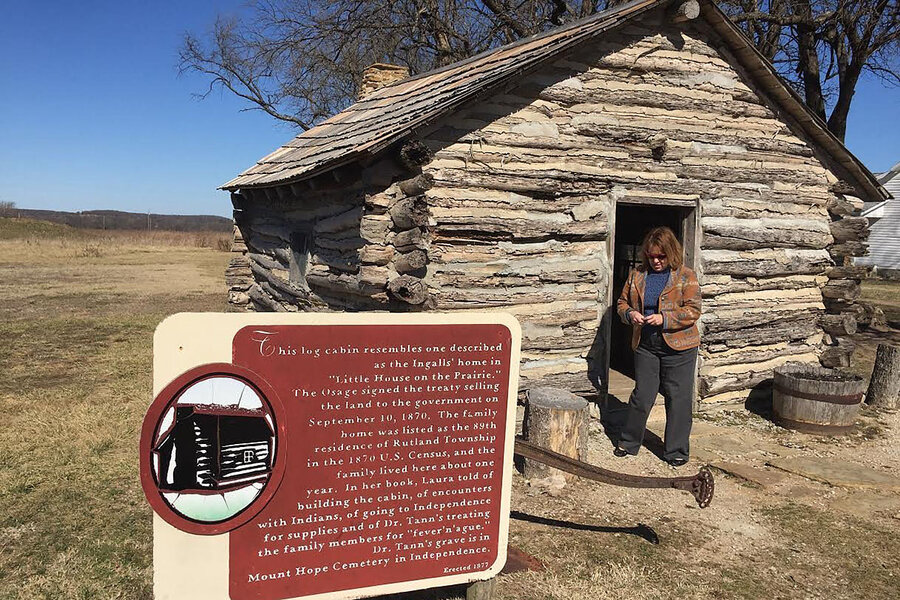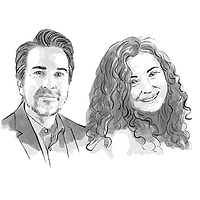Romantic or racist? Perceptions shift on 'Little House on the Prairie'
Loading...

In Minnesota, Waziyatawin’s daughter came home from school one afternoon shaken and deeply disturbed by that day’s read-along.
The book? “Little House on the Prairie.” Her mom says the then-8-year-old was upset by hearing her teacher deliver the novel’s phrase, “The only good Indian is a dead Indian.” When Dr. Waziyatawin, a Dakota historian with a doctorate in American history from Cornell University, petitioned the Yellow Medicine East District in 1998 to stop teaching the book in third grade, her request was rejected.
In Kansas, Laura McLemore, who was named after the Little House series’ author Laura Ingalls Wilder, dedicates herself to preserving the legacy of the author, dressing up as the fictionalized Laura character to make the pioneer-era books come alive for school kids.
In Boston, when James Noonan, a research affiliate at Harvard Graduate School of Education, read the book to his 3-year-old daughter last year, he says he struggled to find a “middle path,” pointing out racism and talking about the perspectives of the Native characters not included in the series. “I'm not trying to censor it. I'm trying to ask important questions about it and not let Ma's perspective speak for itself,” says Dr. Noonan.
These divergent responses reflect a still-unsettled struggle over how society should deal with books – especially ones long revered as classics – that contain racism. The “Little House on the Prairie” series, which follows the fictionalized Ingalls family as they settle in Kansas, has for decades been a third-grade reading staple, translated into more than 40 languages as well as adapted for TV.
Known more for their cozy depictions of pioneer life, Ms. Wilder’s novels also include instances of racism and comparisons of Native people with animals. Many Native Americans have long felt uncomfortable with the books – with National Book Award winner Louise Erdrich writing her own series, “The Birchbark House,” in response.
The Association for Library Service to Children (ALSC) last month unanimously decided to remove Wilder from the name of a children’s literature award, changing the Laura Ingalls Wilder Award to The Children’s Literature Legacy Award. While the “Little House,” books are “deeply meaningful” to some readers, they are associated with “very real pain,” for others, the ALSC said in a statement.
The decision was met with disappointment by those who argue for the literary value of the series, and relief from many who have spent years pointing out the books’ racism.
At the heart of the debate lie questions about how adults can best respect children: Should parents and teachers protect children, especially children of color, from potentially harmful reading materials; or is it possible for children, with guidance, to read books like the “Little House” series critically? The emotional resonance also deepens because, to many, beloved children’s books aren’t only things you read – they also become touchstones of childhood.
Laura as ‘feisty feminist’
In teaching colonial history, adults should be honest with children, who have “an inherent sense of right and wrong,” says Waziyatawin. Books like “Little House,” “cloud” the encroachment of Native lands with a sense of righteousness that makes it difficult for children to see the injustice in those actions, she says in a phone interview. For example, rosy depictions of the Ingalls family homesteading on the land obscure the fact that they were actually squatting illegally on the Osage nation’s land. “The overall message is that [the Ingalls] are good and righteous people, and if they hate Indians, if they think Indians are expendable, or if they think Indians should be removed, then that must be a good thing.”
Dr. McLemore, the fifth-grade teacher in Maize, Kan., who dresses up as Wilder, reads the books to her students. She says the books provide an opportunity to teach lessons about American history, examine maps and other artifacts, and convey messages about self-reliance, perseverance, and resilience. She previously served as the president of the Laura Ingalls Wilder Legacy and Research Association, which opposed the name change.
“When I look at the real Laura she was just a feisty, strong-willed feminist. She was basically a feminist in a time it wasn't popular to be a feminist…[saying,] ‘I'm going to make a mark for myself in the world,’” McLemore says.
“These books are worthwhile,” she adds. “They are a piece of the classical genre of children's literature. They deserve to be kept in libraries and they deserve to be kept as part of our culture. I don't believe that this award is going to change the fact that people all around the world still read and love these books.”
ALSC is clear on the question of reading Wilder’s books: “We are not demanding that anyone stop reading Wilder’s books, talking about them, or making them available to children,” it says in a statement. “We hope adults think critically about Wilder’s books and the discussions that can take place around them.”
The decision is part of ALSC “establishing itself as an organization that truly cares about all children,” says Edith Campbell, an associate librarian at Indiana State University who works to improve representation of people of color and Native people in literature.
“[Children's] books are just a very small part of it. It's a critical part because children's books are what we use to socialize children to get them to understand what it means to be a United States citizen,” Ms. Campbell says. “And if we're telling them through these books that whiteness is what's right, what's correct, and what's acceptable and that who you are and what you bring to the table is not acceptable, we're talking about trauma and we're talking about stress.”
Reading, and teaching, critically
What it means to read critically is an ongoing debate.
Native American parents have written to Debbie Reese for years about their children’s experiences of embarrassment, shame, and outrage while reading the “Little House” books as third graders.
“Using literature to try to teach [US history of racism] is problematic,” says Dr. Reese, who runs the blog, American Indians in Children’s Literature. Arguing for the teaching value of the Little House books “assumes that all the students are white and only white kids need to learn racist history through literature. And along the way everybody else who this book is about just needs to grin and bear it. They're being used for the benefit of someone else.”
In the original 1935 version of “Little House on the Prairie,” a description reads, “There were no people. Only Indians lived there.” A concerned reader in 1952 pointed out the line to the publisher, who changed “people” to “settlers.” Other classic works of literature have been changed to excise racist content, including Hugh Lofting’s “Doctor Dolittle,” Roald Dahl’s “Charlie and the Chocolate Factory,” and the “Babar the Elephant” series.
The barriers to respectfully teaching and reading about colonial history and Native Americans are high, say experts.
Reese, a member of Nambe Pueblo tribe in New Mexico, suggests classrooms “start with Native people in the present day…[as] most people don’t even know we’re still here.” She also catalogs best books by Native American authors on her blog.
“The Birchbark House” series by Louise Erdrich follows a young female Ojibwe protagonist around the same time period as the Little House series. Some suggest it as a companion read to “Little House.”
As for Waziyatawin, the debate around the books is a lesson for parents and educators.
“From my perspective it's really an issue about power and about good decisions about curriculum for our children,” she says.






